Masterpieces From Montreal: Montreal Guitar Show 2011
August 16, 2011
We travel to the fifth-annual Montreal Guitar Show to bring you photos, specs, and video interviews on the latest designs from some of the world’s most highly esteemed and forward-thinking luthiers.
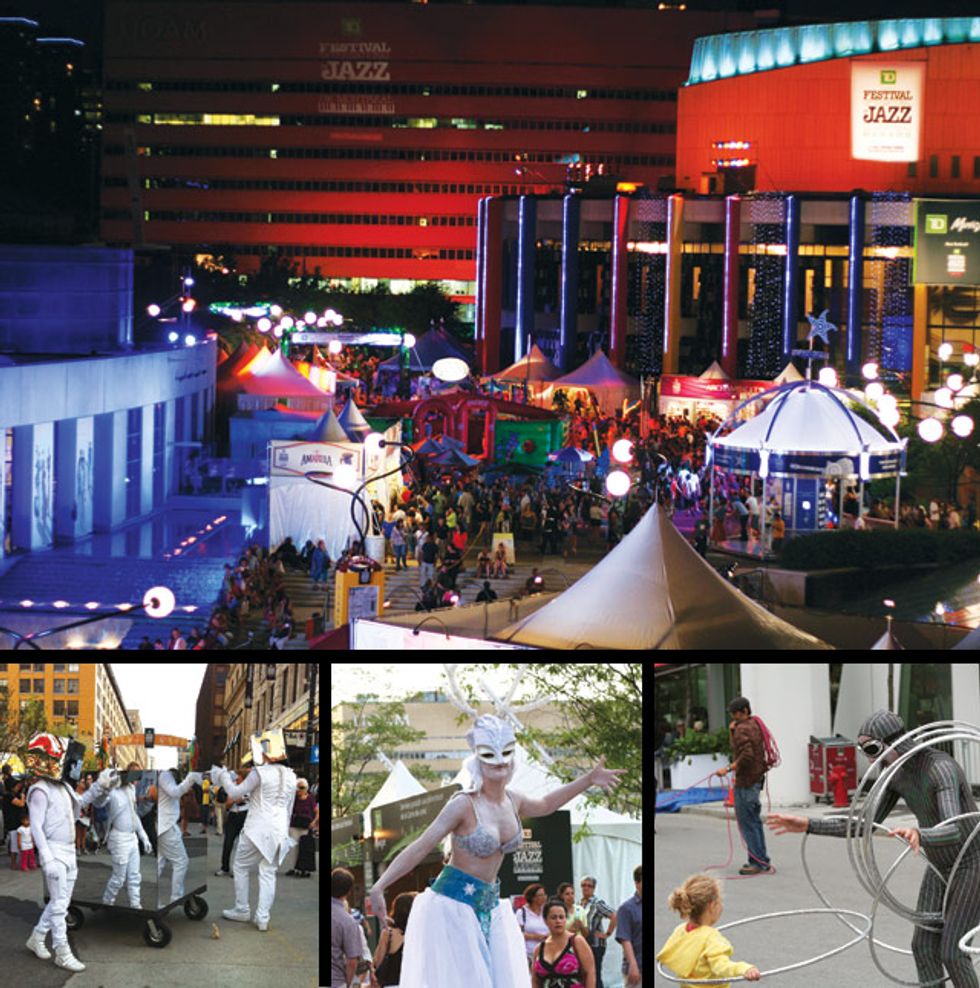
Just outside the halls of the Montreal Guitar Show, the Montreal Jazz Festival’s
family-friendly atmosphere delighted children and adult music lovers with
whimsical street performers, delicious food, and cool tunes at every turn.
Features that turn heads at other musical- instrument trade shows—things like fanned frets, side soundports, armrests, exotic woods, and scalloped fretboards—are standard fare at the Montreal Guitar Show.
Now in its fifth year, the invitation-only annual gathering of cutting-edge luthiers from all over the world—including from Turkey, Malaysia, Brazil, and Germany—was held July 1–3 on the fourth floor of the Hyatt Regency Montreal. If you’re a journalist covering the show, it’s easy pickings: Every direction you look, there’s a masterpiece worth photographing, filming, verbally dissecting with its creator—and perhaps even playing if you’re lucky.
When we say “creator,” we literally mean the person who built the instrument with her/his own hands. Luthier attendance is mandatory for any outfit exhibiting at the show, and most of the exhibitors are oneperson operations. Because of this, there’s also something else wonderful going on just beneath the surface of the MGS—something that benefits players and the industry at large alike: These passionate builders don’t just come to show off their eye-and ear-grabbing instruments, they also come to share, learn, and help each other perfect and innovate the instruments that will shape both the music and the instrument building of tomorrow.
This year marked the third year Premier Guitar has covered the event, but it was no less charming and inspiring this time around. Because the MGS is actually part of the Montreal Jazz Festival—the world’s largest jazz festival—covering it meant weaving our way through crowds buzzing with French conversation (much of it powered by Heineken, official sponsor of the extravaganza), elaborately costumed street performers, and the joyful tones of more than 750 free outdoor concerts. It was impossible not to have a great time.
As always, our mission was to bring the Montreal Guitar Show to you in as many ways as possible, beginning with the pages before you. When you’re done here, be sure to visit premierguitar.com to see nearly 40video interviews with acoustic and electricluthiers from the show, a hefty photo gallery that includes the instruments shown here and more, and Montreal Jazz Festivalperformance videos from Kaki King, EricBibb, Laurence Juber, the California GuitarTrio, and Jake Shimabukuro.
Without further ado, let’s begin marveling at the masterpieces from Montreal.
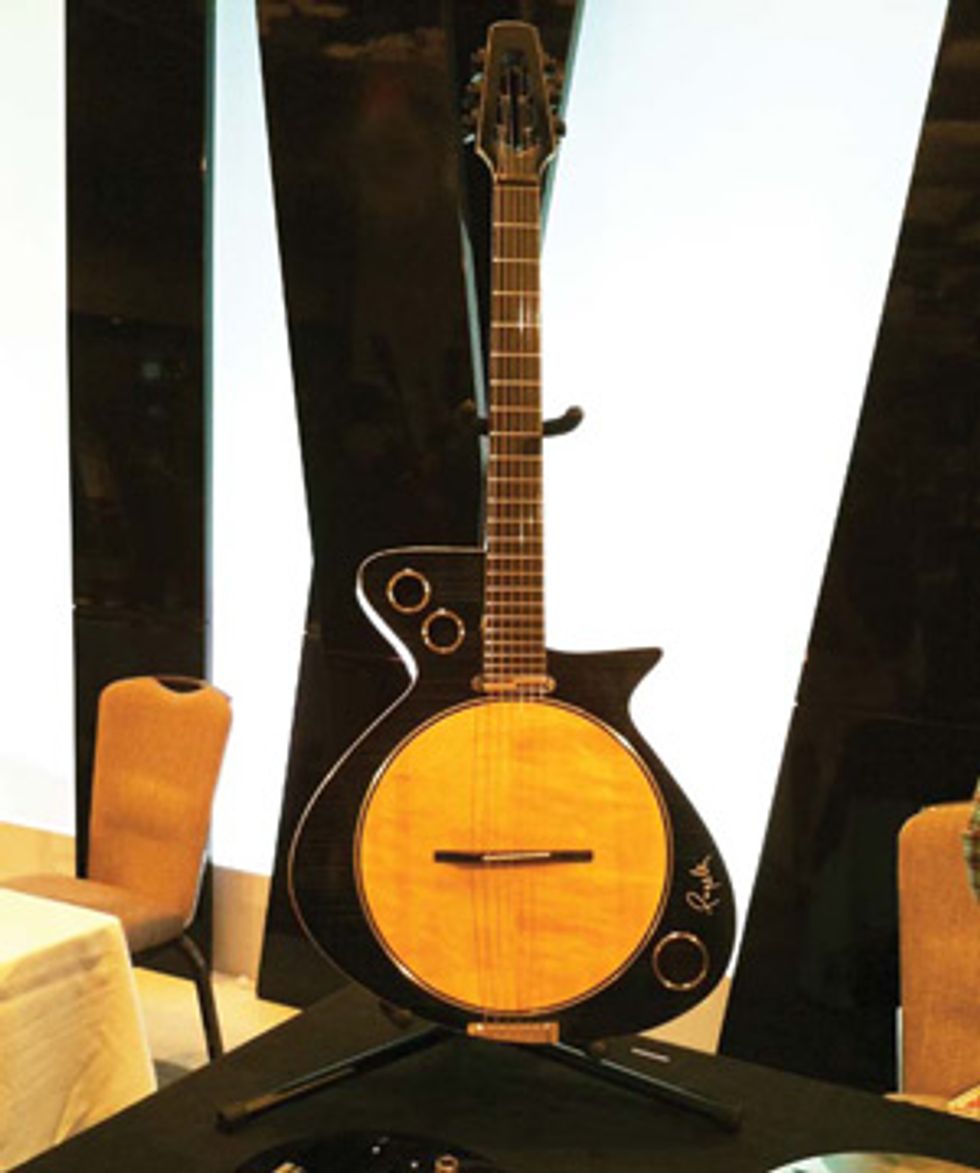
Pagelli’s interchangeable-top guitar is shown outfitted with the acoustic tone plate,
while the resonator plate is on the table at right and the electric plate is on the left.
Pagelli Interchangeable-Top Guitar
This innovative design from Swiss luthier Claudio Pagelli was one of the show’s highlights. With multi-instrumentalists in mind, Pagelli created an alluring gem with four interchangeable tone plates that you can transfer in and out of the 6-string to go from acoustic to electric to resonator to banjo tones in a minute or two—with the strings essentially staying in tune throughout the process. (Pagelli says the plates will soon have quick-change wireless connections to make swapping them out even easier.) The electric tone plate features Lace Alumitones (Volume and Tone controls are hidden in the upper-bout soundholes), and the floating bridge can also be changed out with a sitar bridge for even more tones.
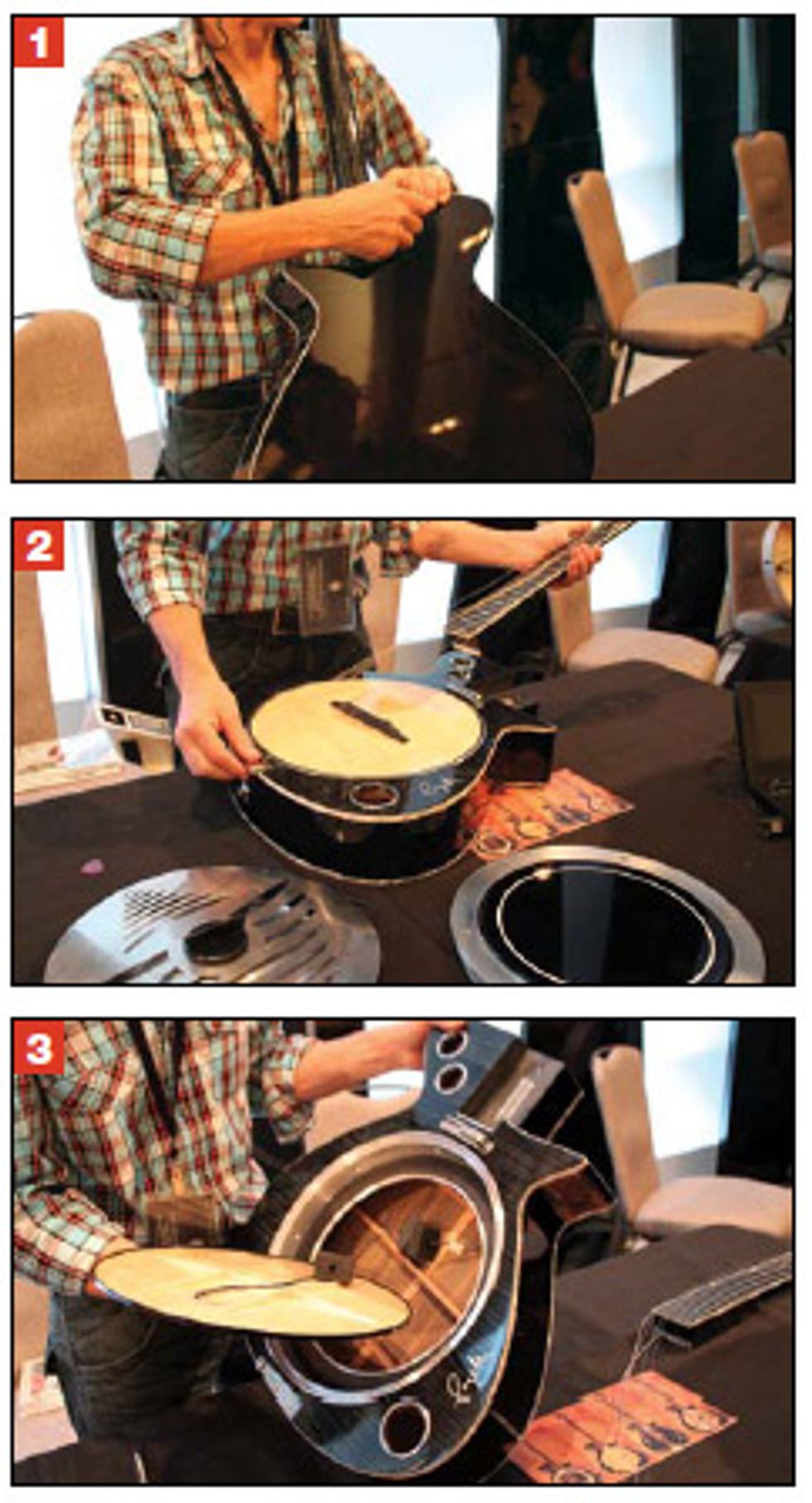
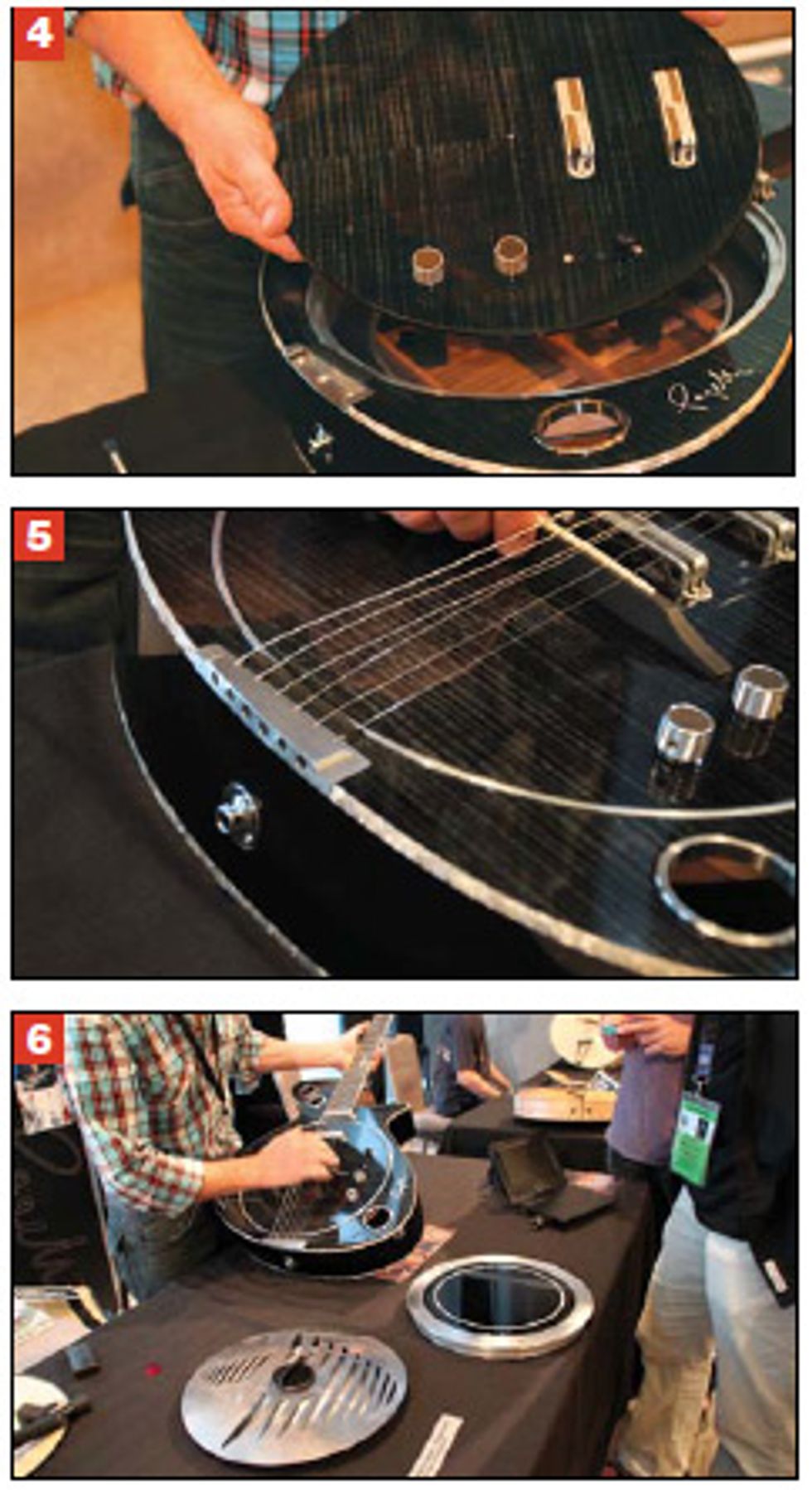
1. Claudio Pagelli unscrews the lock-pin on the back of the neck. 2. Pagelli carefully removes the neck and slide-out tailpiece. 3. The tone plate pops out. This prototype had wires connecting the electronics, but the final version will have quick-change connections. 4. The electric tone plate is dropped into place. 5. The floating bridge is positioned before the neck is secured. 6. Pagelli strums the guitar for a few onlookers. (Note the banjo tone plate at right).
Tone-plate changes are made possible by a lock-pin mechanism in the neck-heel area that allows you to unscrew and tilt the neck forward for access to the removable disc, and the same mechanism also facilitates removing the neck for easy transport. Deconstructed, the whole package fits in a case you can easily stow in an airplane’s overhead compartment. “I was sure it was a cool idea, but I wasn’t sure if it would work,” Pagelli told PG. “I’m very happy it turned out like this.”
pagelli.com
Alquier Gnossienne
For three years now, French builder Jean- Yves Alquier has surprised and delighted fans of forward-thinking guitar design with the instruments he’s shown in Montreal. This year, he showed the third guitar in a series he began in 2009 with the Air Mail Special, followed by 2010’s Papaleocada.
“My concept was to make three hot-rod style guitars that pay tribute to Charlie Christian, the Dopyera brothers [John Dopyera invented the resonator guitar and created the Dobro with his siblings Rudy and Emil], and Erik Satie. This guitar, the last of my triptych, is inspired by Gnossienne No. 1—one of Satie’s compositions that I like very much. So I call it the Gnossienne.”
This 8-string acoustic-electric has a handful of beautifully unusual design twists. “It has nylon strings,” explains Alquier, “and it’s tuned A–E–A–D–G–B–E–A. The two outside A strings expand the standard 6-string tuning in both the bass and treble registers. I was inspired by the timbre of a 17th-century lute. But the difference is I designed this guitar to have all its sound remain inside, rather than project out, as you would with a traditional lute or classical guitar. I use a Highlander pickup system to amplify this interior sound. Essentially, the amplifier allows the listener to venture inside the instrument.”
The Gnossienne’s spruce soundboard is tucked inside the red body, which is actually a shell that surrounds the top and its bracing. “I use a fan bracing pattern,” Alquier continues. “The braces are made with two spruce strips surrounding a carbon-fiber center. The strings sit on carbon-fiber saddles that penetrate through the exterior body and attach to the interior top, driving it like pistons.”
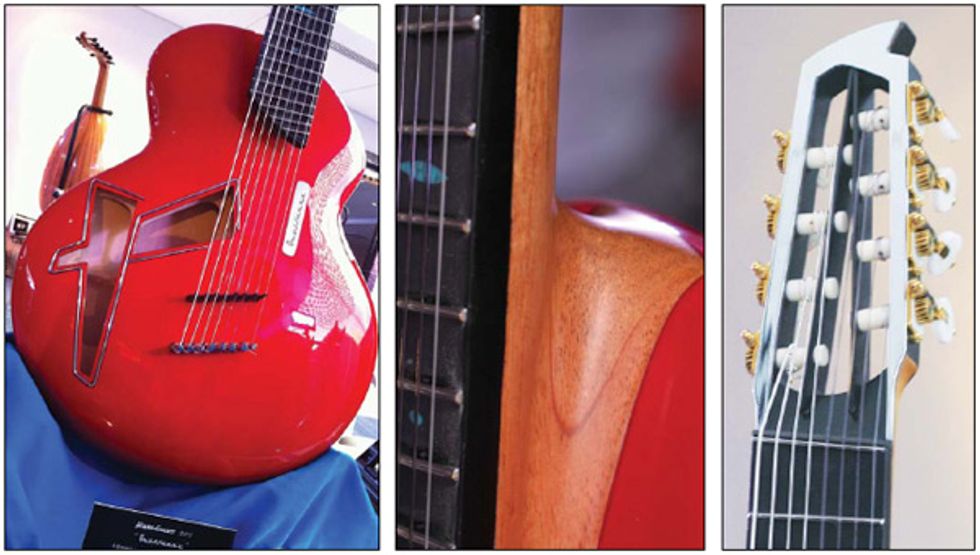
Left: The fan-braced spruce soundboard of Jean-Yves Alquier’s Gnossienne 8-string is inside the red
outer shell. Note the carbon-fiber string saddles. Middle: The way the Gnossienne’s neck joint melds
seemlessly with the outer shell is a thing of beauty. Right: The instrument is tuned A–E–A–D–G–B–E– A,
and the only parts Alquier didn’t build are the Rodgers tuners and the Highlander pickup.
Other construction details include fanned frets and multiple string-scale lengths that range from 640 mm (high A) to 670 mm (low A). The frets sit on a concave fretboard, which makes them look like little arched bridges. “I was inspired by the sitar,” says Alquier, “which has tall, curved frets.” But unlike the sitar, each of the Gnossienne’s frets is embedded into a tiny pedestal. “That’s because I didn’t want the frets to collapse. I first carved the fretboard from basswood and then made a mold from that sculpture and poured in a composite material to form the fretboard. Actually, I made two fretboards. The first was graphite, which looked beautiful. But it’s very hard to glue anything to graphite because it’s so slippery. So I abandoned that idea and used a composite consisting of black powder suspended in a resin base.”
Except for the custom Rodgers tuners and Highlander pickup system, Alquier fabricated all the parts and assembled the guitar himself. Finding low- and high-A nylon strings wasn’t a problem. “Both are made by Savarez,” says Alquier. “The low A is for nylon-string baritone guitar and the high A is a lute string.”
Needless to say, the Gnossienne is a one-of-a-kind instrument that stands at the crossroads of guitar, lute, and sculpture. “We have the guitar, so now we must create the guitarist,” says Alquier. “This has been my concept from the beginning: Build an instrument for a musician who has not yet appeared. Maybe the guitarist is alive already, maybe not. Whoever it is, the player has to be drawn to this guitar and has to think differently.”
alquier-guitar.com
Read MoreShow less
Montreal Guitar Show '11 - Marc Saumier Guitars Awasos Acoustic Bass, Steel-String Acoustic, Archtop
July 10, 2011
PG's Rich Osweiler is On Location at the 2011 Montreal Guitar Show where he visits the Marc Saumier Guitars booth. In this segment, we get to see and learn more about Saumier's Awasos Acoustic Bass, Steel-String Acoustic, and Archtop models.
PG's Rich Osweiler is On Location at the 2011 Montreal Guitar Show where
he visits the Marc Saumier Guitars booth. In this segment, we get to
see and learn more about Saumier's Awasos Acoustic Bass, Steel-String
Acoustic, and Archtop models.
PG's Rebecca Dirks is On Location at the 2011 Montreal Guitar Show where she visits the Hahn Guitars booth. In this segment, we get to see and hear a demo of Hahn's new 229, Strat-style guitar.
PG's Rebecca Dirks is On Location at the 2011 Montreal Guitar Show where
she visits the Hahn Guitars booth. In this segment, we get to see and
hear a demo of Hahn's new 229, Strat-style guitar.